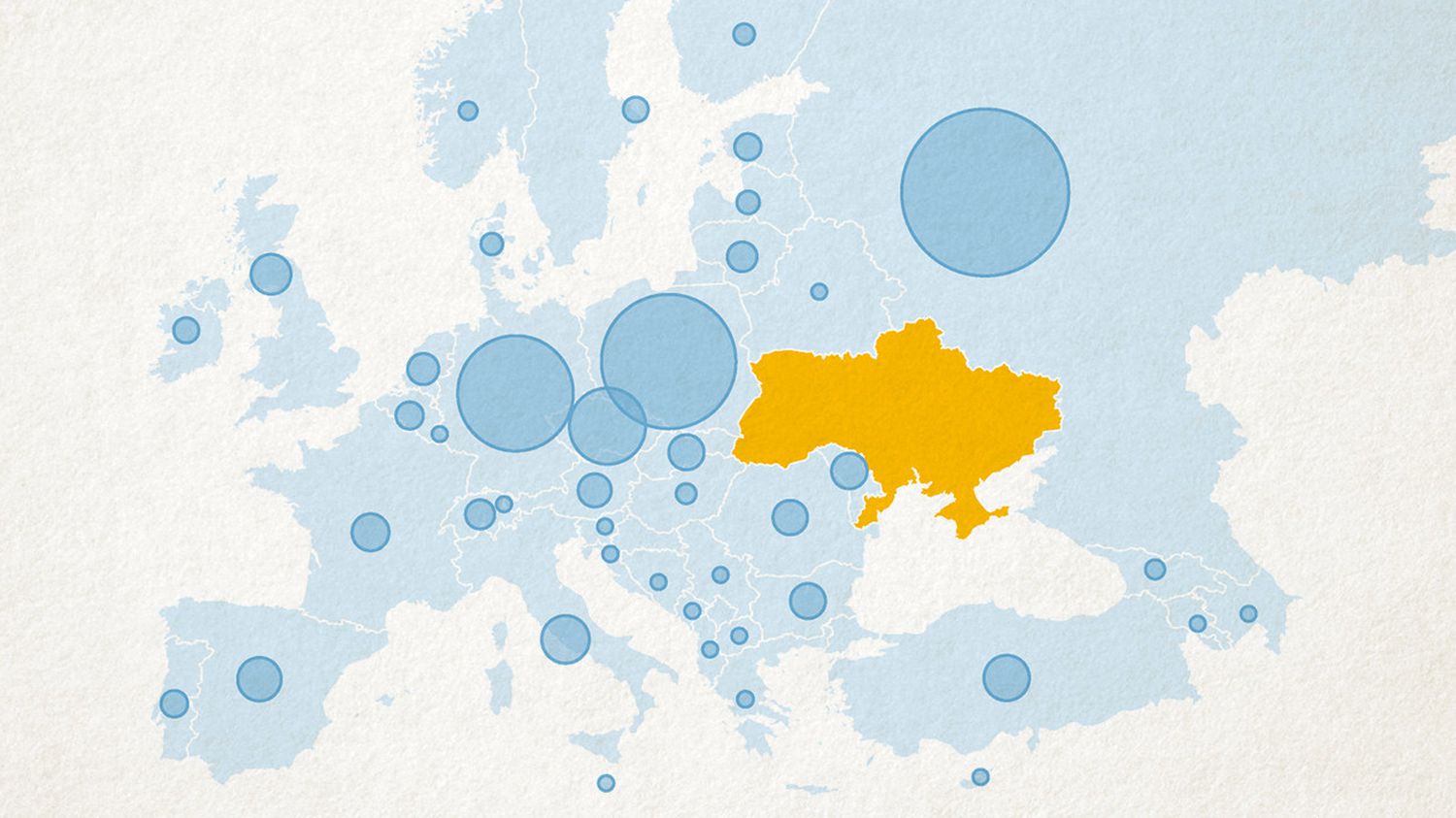Their life changed six months ago. In the wake of Russia’s invasion of their country, hundreds of thousands of Ukrainians crowded the borders in an attempt to flee the conflict. It then took many hours to clear customs and the images of endless lines of vehicles had gone around the world.
>> War in Ukraine: follow our live for the six months of the conflict
The United Nations High Commissioner for Refugees (UNHCR) counts, as of August 16, more than six million Ukrainian displaced people across Europe. More than one in seven inhabitants therefore fled Ukraine. Where did they go to find refuge? What is their situation in France? Franceinfo takes stock of the situation of Ukrainian refugees six months after the start of the war.
Figures from the High Commissioner for Refugees testify to the massive exodus triggered by the start of the war. The graph below shows how many people cross Ukrainian borders every day. It is not only about people fleeing the war, but the increase in traffic at the border and the gap between entries and exits make it possible to visualize the phenomenon of migration due to the conflict. Thus, during the first two weeks, more than 150,000 people left Ukraine every day. Conversely, barely more than 10,000 people entered the country.
The number of people leaving Ukraine daily then fell, stabilizing around 50,000 at the beginning of April. Meanwhile, around 35,000 people have been entering the country every day since mid-May. There are always, six months after the start of the war, more people leaving Ukraine than entering it. This difference is on average 15,000 people over the past few weeks. The massive return to the country of Ukrainians has therefore not yet taken place.
Where are these more than six million exiled Ukrainians? Nearly two million of them are currently in Russia, but their situation is unique. The reasons and conditions for their departure are presented very differently by Russia and Ukraine. Moscow claims that “temporary accommodation” were put in place to shelter Ukrainian civilians. For kyiv, these citizens were deported to camps.
Apart from this particular case, Poland is the main host country, with more than 1.2 million displaced Ukrainians. Germany hosts just under a million refugees, and the Czech Republic around 400,000. Still according to the UNHCR, around 96,000 people have arrived in France. A figure much lower than in Germany and a little lower than the 160,000 Ukrainians taken care of in Italy or the more than 130,000 received in Spain.
“Germany has long been the major immigration country for Central Europe, which attracts with its economic prosperity and its welcoming policycontextualizes François Héran, director of the Convergences Migrations Institute at the CNRS. And southern countries like Spain, Italy or Portugal have a larger Ukrainian diaspora than France, and displaced people have therefore been able to go there to join members of their family.
The French Office for Immigration and Integration (OFII) also identifies displaced Ukrainians who have arrived in France. The organization counts 100,000, a figure close to that of the United Nations.
“It’s 80% women and children and it’s a specificity of Ukrainian immigration. Afghan asylum seekers, for example, are mostly men.”
Didier Leschi, director of the OFIIat franceinfo
At the end of the 2021-2022 school year, 18,500 Ukrainian children were in school in France, according to the OFII. “I think that represents half of the Ukrainian children receivedsays Didier Leschi. Schooling is systematically offered and the French authorities strongly encourage it, as it is compulsory in France.”
At the economic level, displaced Ukrainians can benefit from the allowance for asylum seekers. For a single person, the amount is 6.80 euros per day, and can be increased to 14.20 euros if the person has requested accommodation and does not benefit from free accommodation. The OFII also lists at least 10,000 Ukrainian refugees in work. A right to work that asylum seekers from other countries do not enjoy.
“In general, we see an exceptional effort by the government and the prefects to welcome the displaced Ukrainianssays François Héran. It shows that when it comes to immigration, when you want, you can!”
